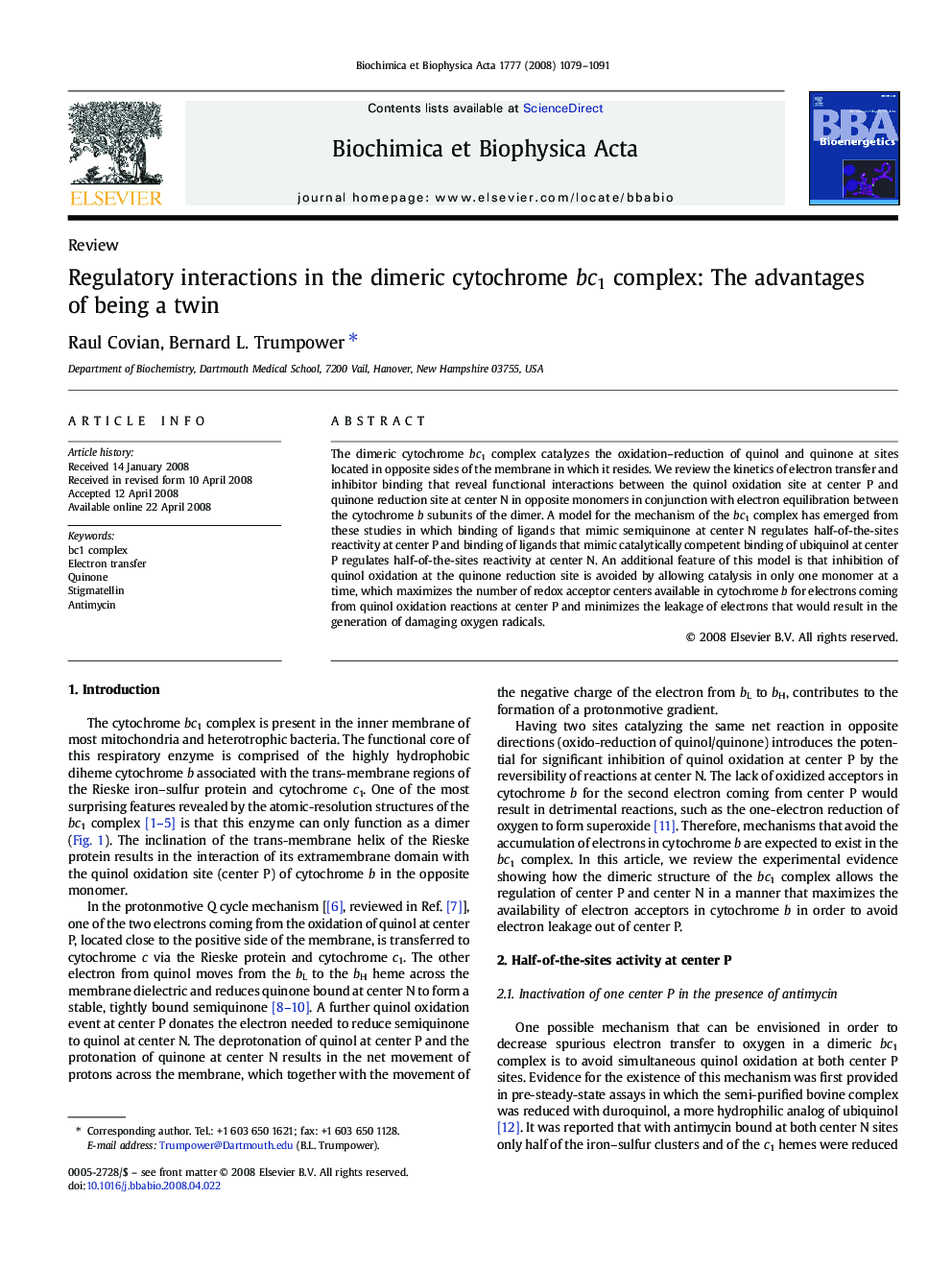| Article ID | Journal | Published Year | Pages | File Type |
|---|---|---|---|---|
| 1943225 | Biochimica et Biophysica Acta (BBA) - Bioenergetics | 2008 | 13 Pages |
The dimeric cytochrome bc1 complex catalyzes the oxidation–reduction of quinol and quinone at sites located in opposite sides of the membrane in which it resides. We review the kinetics of electron transfer and inhibitor binding that reveal functional interactions between the quinol oxidation site at center P and quinone reduction site at center N in opposite monomers in conjunction with electron equilibration between the cytochrome b subunits of the dimer. A model for the mechanism of the bc1 complex has emerged from these studies in which binding of ligands that mimic semiquinone at center N regulates half-of-the-sites reactivity at center P and binding of ligands that mimic catalytically competent binding of ubiquinol at center P regulates half-of-the-sites reactivity at center N. An additional feature of this model is that inhibition of quinol oxidation at the quinone reduction site is avoided by allowing catalysis in only one monomer at a time, which maximizes the number of redox acceptor centers available in cytochrome b for electrons coming from quinol oxidation reactions at center P and minimizes the leakage of electrons that would result in the generation of damaging oxygen radicals.
